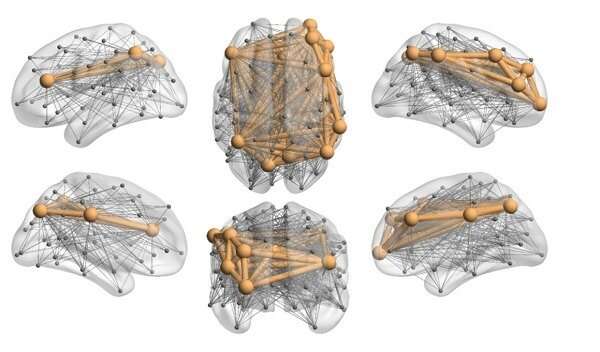Home » Health News »
Effects of stress and coping strategies regarding COVID also depend on pre-pandemic state of brain networks

The COVID-19 pandemic generated a unique scenario to analyze the psychological impact of global and extreme situations on the population. Now, a study reveals the importance of the configuration of individual brain networks—before the COVID-19 outbreak—in people’s ability of managing the impact of stress and coping strategies regarding the pandemic.
According to the article, published in the journal Biological Psychiatry: Cognitive Neuroscience and Neuroimaging, the state of brain functionality—and not only sociodemographic or psychological aspects—should be taken into account in order to identify the most vulnerable population and thus be able to design preventive mental health strategies to face a global stress factor such as a pandemic.
Understanding pre-pandemic predictors
In the study, based on a sample of 2,023 people aged between 40 and 65, the team analyzed whether sociodemographic, psychological and neurobiological factors before the pandemic could be predictors of the changes in mental health experienced by the population during the first year of COVID-19. “As in previous studies, we found that being a woman represents a risk factor, but younger people also suffered more in terms of increased symptoms of anxiety and depression,” says Professor David Bartrés-Faz, a member of the Department of Medicine of the UB and associate researcher at the Institut Guttmann.
“This second result—the researcher continues—is consistent with most studies in the scientific literature. It suggests that women and younger people have suffered more from the effect of periods of confinement and restriction during the pandemic.”
“The second level of predictors we identified are psychological. Perceiving more stress during the pandemic months was associated with increased symptoms of anxiety and depression during that period. However, having good stress coping strategies—seeking support from others, relativizing or putting emotional states in context—attenuated the negative effect of stress,” Bartrés-Faz notes.
Neuroimaging: Shaping brain networks
The application of neuroimaging techniques has made it possible to determine useful indicators to identify the most vulnerable populations to the effect of prolonged stress and with a potential impact on mental health. This is an effective technology for understanding abnormalities in brain morphology or functionality in different cases (schizophrenia, etc.) or for advancing knowledge of how certain entities, currently identified on the basis of clinical diagnoses, may correspond to different neurobiological entities.
“Using neuroimaging techniques, we were able to show that the effect of perceived stress and coping strategies also depend on the configuration of the state of brain networks before the onset of the pandemic,” says researcher María Cabello-Toscano, first author of the paper.
Therefore, people who are characterized by a more “isolated” functioning of one network—called executive control—from the rest of the brain’s networks—associated with self or self-referential information—are more sensitive to the effects of stress and therefore need better coping strategies in order not to show symptoms of anxiety or depression.
The brain networks that were identified which interact with perceived stress and coping strategies—for example, the frontal executive network, the salience network and the default brain network—overlap with those described in the scientific literature as circuits involved in resilience processes in stress, “but also in resilience processes, understood as the ability to maintain cognitive function in elderly people in the face of brain atrophy or even in the onset of neurodegenerative diseases,” says researcher Lídia Vaqué-Alcázar.
COVID-19 and mental health: An innovative perspective
From a methodological perspective, combining the analysis of psychological factors and neuroimaging brain measures is an innovative strategy in the context of the studies conducted during the COVID-19 pandemic. Another methodological turning point was the long-term, year-long follow-up of a large population sample and the availability of a large amount of information on mental health aspects of the participants in the study during the two years prior to the onset of the pandemic.
“This aspect allowed us to adjust the results considering the previous characteristics of each person, which differentiates our study from many other studies based on ad hoc surveys to assess the impact of COVID-19 on mental health with the ongoing pandemic,” says Bartés-Faz. “In the absence of previous data—the researcher continues—it is difficult to interpret whether the results obtained are a true reflection of the impact of COVID-19 or were already observable characteristics in that sample prior to the onset of the pandemic.”
In the field of preventive medicine and global health, “it is not the individual factors but the combination of these elements in each individual what allows us to predict the risk of vulnerability in terms of anxiety and depression symptoms during a prolonged stress factor,” states Bartrés-Faz.
Source: Read Full Article



